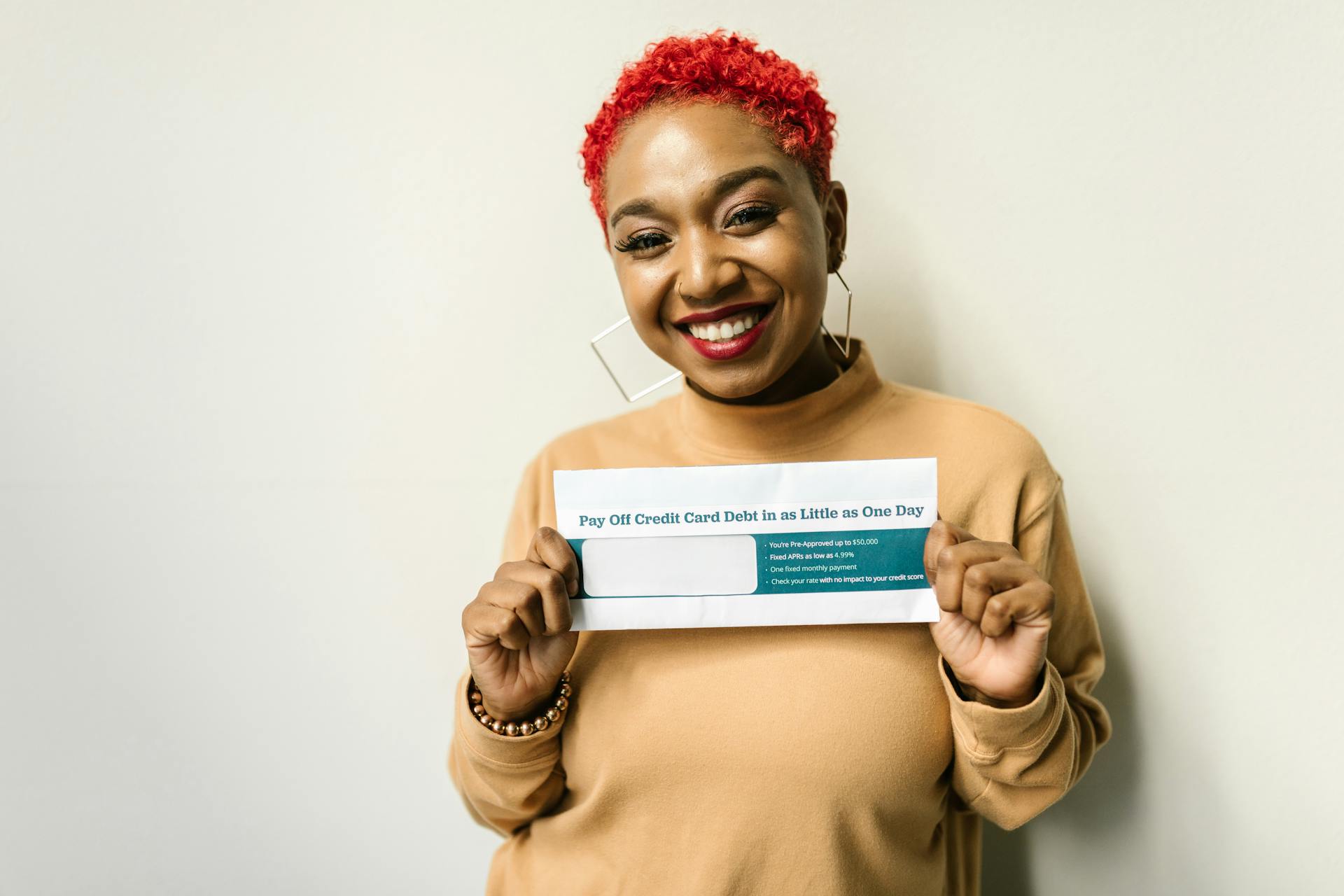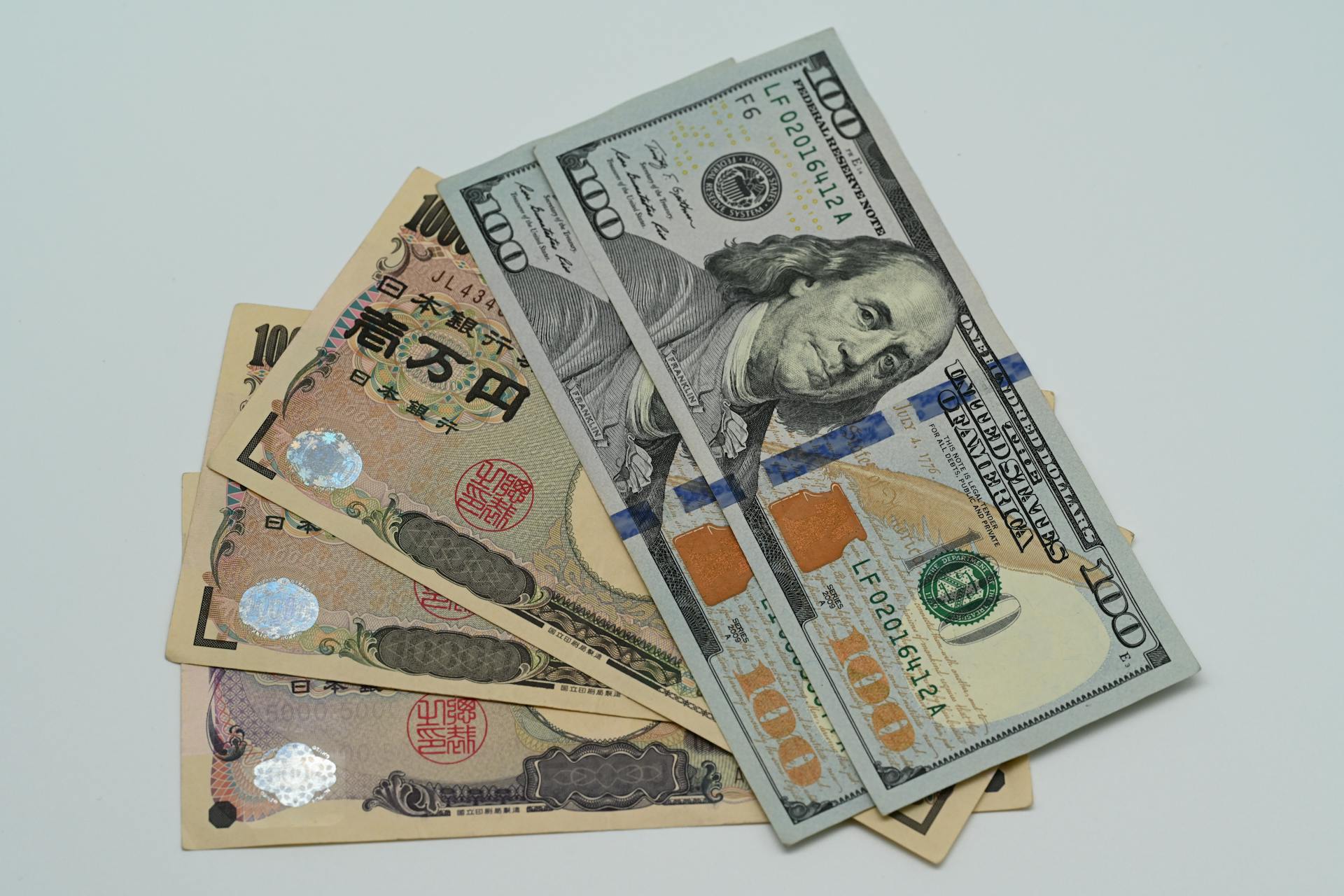
You can keep your car loan payments current during a Chapter 13 bankruptcy, but you'll need to work with your lender to modify the loan terms. This can help you avoid repossession and keep your vehicle.
Chapter 13 bankruptcy allows you to reorganize your debts, including car loans, over a three- to five-year period. This can give you some breathing room to get back on your feet financially.
You'll need to make regular payments to your lender as part of your Chapter 13 plan, which can include car loan payments. This will help you keep your car loan current and avoid repossession.
For more insights, see: Car Loans during Bankruptcy Chapter 7
Payment and Repossession
You can pay your car loan through your Chapter 13 plan with the trustee paying the lender. This modifies the interest rate to the prime interest rate, plus an additional 2%.
Paying your loan through the plan can be more advantageous than paying the lender directly, especially if you're shortening the length of your loan. However, this may come at the expense of your unsecured creditors by reducing the amount they're repaid.
Suggestion: What Are the Interest Rates on Car Loans
If you're behind on payments, Chapter 13 allows you to catch up on these arrears by incorporating the back payments into your broader repayment plan. This makes them more manageable by spreading them over the 3 to 5-year timeline.
You can avoid repossession by filing for Chapter 13 bankruptcy. This provides an automatic stay, which prohibits creditors or collection agencies from collecting money or assets from you.
However, if you have a lot of non-exempt equity in your vehicle, it might be an inconvenience. You'll need to pay the total value of the non-exempt property that you can keep.
Here's a summary of the options for paying your car loan through Chapter 13:
- Pay through trustee: modifies the interest rate and pays off the loan at the end of your bankruptcy case
- Pay directly: doesn't modify the interest rate, but allows you to pay the loan off sooner
- Surrender: gives up the vehicle
- Cram down: reduces the balance of your car loan to the amount of equity in the vehicle
It's essential to note that if you start missing payments under your Chapter 13 plan, the court may lift the automatic stay, allowing creditors to proceed with repossession.
Vehicle Management
Vehicle management is crucial during a Chapter 13 bankruptcy. You can keep your vehicle if you have more equity than you can exempt in a Chapter 7 bankruptcy, but in a Chapter 13 bankruptcy, you can still keep your vehicle even if it's over-exempt.
Intriguing read: Can You Keep Credit Cards in Chapter 13
In a Chapter 13 bankruptcy, you'll have to pay the extra amount over the exemption to your unsecured creditors. For example, if your vehicle is worth $20,000, has a loan balance of $15,000, and the North Carolina vehicle exemption of $3,500 is applied, you'll have $1,500 of non-exempt equity left over.
You can also cram down your loan if you have a vehicle with negative equity going into Chapter 13. This means the lender will accept the market value of the vehicle rather than your loan balance.
Here are some key options for managing your vehicle during Chapter 13:
- Paying the lender directly: You can continue to make payments to the lender, but the interest rate will be modified to the prime interest rate plus 2%.
- Paying through the trustee: The trustee will pay the loan from a portion of your monthly plan payment, and you'll own the vehicle free and clear from the loan at the end of your bankruptcy case.
Selling or Surrendering a Vehicle
You can surrender your vehicle as part of your bankruptcy proceedings if holding onto it is not feasible.
The lender will sell the car, and any remaining balance becomes part of your Chapter 13 case.
You won't be responsible for paying off this deficiency, or you'll pay only a fraction of it, as it gets categorized as unsecured debt.
In Chapter 13 bankruptcy, surrendering your vehicle can be a good option if you have a high-value car or multiple cars with high amounts of equity.
If you decide to surrender your car, you can voluntarily give it back to the lender, but you're still responsible for any deficiency balance left after the vehicle sells at auction.
A Chapter 13 bankruptcy takes three or five years to complete, and getting approved for auto financing during an open Chapter 13 takes time, so make sure you follow each of the steps before jumping into subprime financing.
You may have some time to figure out what to do after filing bankruptcy, thanks to the automatic stay that halts all collection efforts until your bankruptcy filing details are worked out.
Consider reading: After Bankruptcy Car Loans
Request for New Item
Requesting a new item during Chapter 13 bankruptcy can be challenging, but it's not impossible.
To get a new car, you'll need to secure financing from a car dealer, but be sure to disclose your Chapter 13 status to them. This will require a specialized financing procedure for approval.
Suggestion: New Century Financial

Your Chapter 13 attorney will guide you through the process, which involves adjusting your existing plan and verifying your ability to afford the new vehicle. The trustee may reject certain purchases, but collaboration with your attorney and auto dealer can often find solutions.
To navigate this process, follow these essential steps:
- Contact your attorney to walk you through the steps to getting a replacement vehicle.
- Secure financing from a car dealer, disclosing your Chapter 13 status and having them put your payment information on the Chapter 13 Trustee's auto loan approval form.
Payment for Excessive Vehicle Equity
In a Chapter 13 bankruptcy, you may be required to pay the non-exempt equity of your vehicle. This means that if your vehicle is worth more than you can exempt, you'll have to pay the difference to your unsecured creditors.
For example, if you have vehicle equity worth $15,000 and your state exemptions allow you to keep $5,000, you'll be required to pay $10,000 through the bankruptcy plan. This amount can be a significant financial burden.
If you have a lot of non-exempt equity in your vehicle, it may not be feasible to pay the required plan payment. In such cases, it's essential to carefully review your financial situation and consider the implications of bankruptcy on your vehicle ownership.
You might enjoy: Bankruptcy Friendly Car Loans
The non-exempt equity of your vehicle can be calculated by subtracting the exempt value from the total value of your vehicle. For instance, if your vehicle is worth $20,000 and has a loan balance of $15,000, with a North Carolina vehicle exemption of $3,500 applied, you'll have $1,500 of non-exempt equity left over.
See what others are reading: What Does Upside down on Car Loan Mean
Financial Considerations
Your car loan payments can be added to your Chapter 13 bankruptcy repayment plan if you're behind on payments. This can help you catch up on your loan, but you'll need to prove you can make the payments.
You'll also need to consider your disposable income, which is your income minus essential living expenses. You'll be required to use this income to pay off your unsecured debts within a 3-5 year period.
A unique opportunity in Chapter 13 bankruptcy is the ability to cram down your loan if you have negative equity in your vehicle. This means the balance of your car loan can be reduced to the amount of equity in your vehicle, as seen in the example where a $12,000 loan was reduced to $9,000.
Curious to learn more? Check out: Car Loans for Low Income Earners
Reasonable Expenses
If you're planning to keep your car in a Chapter 13 bankruptcy, you'll need to prove you can continue making loan payments. This includes paying all interest charges and additional fees to your lender.
Your repayment plan should indicate that your disposable monthly income is used to pay off unsecured debts. Creditors will monitor how you handle your finances, so it's essential to be responsible with your expenses.
A high car loan amount for a second vehicle you don't need is not a reasonable expense. You should focus on paying essential bills and unsecured debts within the three to five years repayment plan.
If you have a vehicle with negative equity, a loan cramdown might be an option. This can reduce your car loan amount to the vehicle's market value, making it more manageable.
You'll need to pay the total value of non-exempt property you can keep, including any excessive motor vehicle equity. For example, if you're allowed to keep $5,000 in vehicle equity, but you have $15,000 worth, you'll need to pay the remaining $10,000 through the bankruptcy plan.
Your disposable income will be used to pay off unsecured debts, including creditors who have been monitoring your finances.
Broaden your view: How to Pay off Heloc Faster
Financial Crisis
Filing for bankruptcy can be a stressful and overwhelming experience, especially when it comes to your car loan. Your vehicle is often a lifeline to employment, education, and overall well-being.
Navigating the complexities of Chapter 13 bankruptcy can be particularly challenging, especially when you're worried about the fate of your car loan.
Your vehicle is not just a means of transportation, it's often a lifeline to employment, education, and overall well-being.
Take a look at this: What Happens to Credit Debt When You Die
Interest Rate Uncertainty
Filing for Chapter 13 doesn't automatically lower the interest rate on your car loan, despite what some people think.
Some circumstances may allow for interest rate reduction, but it's crucial to consult with your bankruptcy attorney to understand how this can apply to you.
Failing to understand the specifics of your situation can lead to missed opportunities for interest rate reduction.
Curious to learn more? Check out: How Do Debt Reduction Programs Work
Chapter 13 Process
The Chapter 13 process involves creating a court-approved repayment plan that outlines how you'll pay off your debts, including your car loan. This plan is a critical part of your bankruptcy case.
You might enjoy: Credit Counseling Debt Management Plan
Your repayment plan will be developed in collaboration with your attorney and the bankruptcy trustee assigned to your case. It's a unique plan that takes into account your income, expenses, and types of debt.
The plan can last between 3 and 5 years, giving you a structured timeline to work with. This timeframe allows you to catch up on missed payments and maintain possession of your vehicle.
Steps for Navigating
Navigating the Chapter 13 process can be complex, but understanding the key steps can help you stay on track. To start, you'll need to consult with a bankruptcy attorney to ensure you get the best possible outcome for your situation.
Your attorney will provide personalized guidance on the impact of Chapter 13 Bankruptcy and auto loans, how it will affect your car loans, and help you devise a repayment plan that aligns with your financial capabilities.
Maintaining proper insurance for your car is crucial, as the court will lift the protection that it is afforded in the bankruptcy if you don't have it, leading to repossession.
Take a look at this: Will Chapter 7 Get Rid of Your Medical Bills
To successfully navigate Chapter 13 and auto loans, you need to stay committed to your repayment plan, adhering to the agreed-upon terms is essential for the success of your bankruptcy case and the retention of your vehicle.
Here are some key steps to keep in mind:
- Consult with a bankruptcy attorney to ensure the best possible outcome for your situation.
- Maintain proper insurance for your car to avoid repossession.
- Stay committed to your repayment plan to ensure the success of your bankruptcy case and the retention of your vehicle.
By following these steps and working closely with your attorney, you can navigate the Chapter 13 process with confidence and achieve your financial goals.
Zero Down Attorney Fees
You're looking to file for Chapter 13 bankruptcy, but you're worried about the cost. Zero Down Attorney Fees is a big relief, as you can qualify for no upfront attorney fees in certain cases. Pay only the court filing fee, credit reporting fee, and pre-bankruptcy credit counseling session fee to get a case on file.
This can help stop garnishments, repossessions, and certain court actions. It's a huge weight off your shoulders. Restrictions may apply, so be sure to call to discuss your situation and learn how you can get help.
Broaden your view: File Chapter 13
Frequently Asked Questions
What happens if you incur debt during Chapter 13?
Incurring debt during Chapter 13 requires court approval, but you can try to get it approved later with creditor agreement and a proof of claim. This debt can then be included in your Chapter 13 plan
Sources
- https://mosleyfirm.com/vehicles-in-chapter-13-bankruptcy/
- https://www.thecarconnection.com/car-loans/finance-guides/can-you-get-a-car-loan-with-an-open-chapter-13-bankruptcy/
- https://cutlerbankruptcy.com/how-to-keep-your-car-under-the-illinois-chapter-13-bankruptcy/
- https://www.sawinlaw.com/blog/chapter-13-and-car-loans/
- https://jaxlawcenter.com/blog/chapter-13-bankruptcy-and-car-loans/
Featured Images: pexels.com


